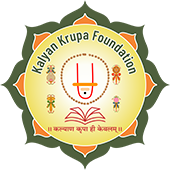Pushtimarg is a rainbow - it is filled with colours and is a spectacle for those who are lucky enough to witness it! Pushtimarg cannot be completely explained or put up in a few pages because it covers a span of 500 beautiful and magnificent years in history. It was started in A.D.1492 by Shri Vallabhacharyaji -Shri Mahaprabhuji, expanded by Shri Gusainji and his seven sons -the saat baalaks and today it's traditions and beliefs are carried forward by around 250Vallabhkul acharyas. This
Pushtimargiya kalpavruksh has grown on to become one of the most respected and followed vaishnav sampradayas, today unofficially there are as many as 5 crore vaishnavas throughout the world who are guided by the acharyas of Vallabhkul.
Here we try to understand some of the issues related to Pushtimarg as also clear many confusions that have sprung up amongst the vaishnavas.
Pushtimargiya kalpavruksh has grown on to become one of the most respected and followed vaishnav sampradayas, today unofficially there are as many as 5 crore vaishnavas throughout the world who are guided by the acharyas of Vallabhkul.
Here we try to understand some of the issues related to Pushtimarg as also clear many confusions that have sprung up amongst the vaishnavas.

